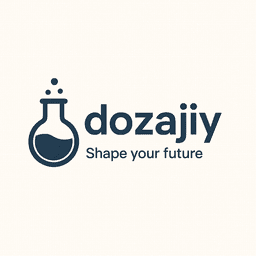
Introduction
In today’s interconnected workplace, everyday manners shape how colleagues, managers and clients perceive you. This article explores practical workplace and social etiquette that strengthens your personal brand: making positive first impressions, communicating clearly and respectfully, managing your digital presence, and building trust through reliability and emotional intelligence. Each section connects to the next, showing how small daily habits accumulate into a reputation that opens career opportunities. We’ll include concrete behaviors, short scripts you can adapt, common pitfalls to avoid, and an easy reference table measuring likely impact. Whether you are new to an office, leading a team, or networking online, these etiquette practices will help you be memorable for the right reasons and turn courteous habits into career advantages.
Make a positive first impression
First impressions are fast and durable. Within seconds people form judgments based on appearance, posture, eye contact and initial words. Managing those signals intentionally is the easiest way to influence how your personal brand starts a relationship.
- Arrive prepared and punctual. Being on time signals respect for others’ time. If you cannot avoid a delay, send a quick message explaining and your revised ETA.
- Mind visual cues. Dress slightly more formally than the average for your environment, keep grooming tidy and adopt an open posture. Small details like clean shoes or a neat notebook register unconsciously.
- Lead with a concise introduction. Use a 15- to 20-second pitch: name, role, and one sentence about what you bring. Example: “Hi, I’m Maya Patel, project manager for the product team. I focus on launching customer features on schedule.”
- Adapt to context. Learn the cultural norms of your workplace or client. In some settings, a firm handshake is expected; in others, a smile and nod are enough.
Start strong and you make subsequent communication easier, because people already view you through a favorable lens.
Communicate clearly and respectfully
Clear communication is the bridge between a good first impression and lasting influence. How you speak, listen and give feedback determines whether your brand reads as competent, collaborative or combative.
- Practice active listening. Paraphrase key points: “So what I hear is X. Did I get that right?” This reduces misunderstandings and signals respect.
- Use balanced feedback. When giving critique, pair an observation with impact and a next step. Example: “When the report missed data from April, the team spent extra time correcting it. For next month, can you add a quick checklist to the draft?”
- Be concise and structured. Start with the main point, provide two supporting details, and end with an action. This format is easy to scan in meetings and messages.
- Mind nonverbal cues. Tone, eye contact and pauses matter. A calm tone keeps tense conversations productive; a quick smile defuses awkwardness.
Good face-to-face communication naturally transitions into appropriate digital behavior, which is the next layer of your public professional identity.
Manage digital presence and etiquette
Online interactions extend your brand far beyond the meeting room. Email, messaging apps and social profiles are searchable artifacts that recruiters, partners and colleagues use to judge reliability and fit.
- Email and messaging standards. Use clear subject lines, one-sentence purpose lines, and explicit calls to action. Example subject: “Proposal review – please approve by Thu 3pm.” Set an expected reply window, for instance 24-48 hours for non-urgent items.
- Video meeting etiquette. Test audio and camera beforehand, use a neutral background, and mute when not speaking. Join a minute early to handle tech issues and avoid disrupting the group.
- Social media and public posts. Keep professional networks updated and consistent with your résumé. Avoid posting content that contradicts your workplace values or could alienate stakeholders.
- Privacy and boundaries. Separate channels for personal and professional communication when appropriate, and be mindful of sharing colleagues’ messages without permission.
Consistency between your in-person behavior and digital footprint creates a coherent brand that others can trust. That trust is reinforced when you follow through, which leads to the next section.
Sustain credibility through reliability and emotional intelligence
Reliability and emotional intelligence are the long game of personal branding. They turn polite behaviors into durable reputation assets that open opportunities and referrals.
- Deliver on commitments. Meet deadlines or communicate early when timelines slip. A short proactive update prevents frustration and preserves trust.
- Own mistakes and repair quickly. A concise apology plus a remediation plan is more effective than defensiveness. Example: “I missed the milestone. I will complete X by Tuesday and will add a status check to our timeline.”
- Manage emotions in conflict. Use curiosity and questions to de-escalate: “Help me understand your concern so I can address it.”
- Build reciprocal relationships. Offer help without immediate expectation of return. People remember who helped them during crunch times.
Behaviors in this section amplify all previous efforts. When you consistently show up well, communicate clearly and maintain strong digital presence, colleagues are more likely to recommend you, include you on projects and give you visibility.
Common etiquette actions and their typical impact
| Action | Perception change | Estimated impact on opportunities (1-10) |
|---|---|---|
| Punctuality for meetings | Shows respect and reliability | 8 |
| Timely, structured email replies | Signals organization and clarity | 7 |
| Thoughtful feedback given privately | Builds trust and credibility | 8 |
| Professional social profile | Improves discoverability and fit | 6 |
| Owning mistakes quickly | Elevates integrity | 9 |
Quick checklist to use daily
- Arrive on time or send an ETA if delayed.
- Open conversations with a brief, clear purpose.
- Respond to non-urgent messages within 24-48 hours.
- Give feedback that cites behavior, impact and next steps.
- Follow up on commitments with a short status update.
Conclusion
Polished etiquette is not about rigid formality; it’s a strategic toolkit that shapes your personal brand. By making strong first impressions, communicating with clarity and respect, managing your online behavior, and demonstrating reliability and emotional intelligence, you build consistent signals that colleagues and clients trust. Small actions, like punctuality, thoughtful feedback, timely replies and controlled tone, compound into professional credibility and opportunities. Use the scripts, table and checklist in this article to evaluate your daily habits and track incremental improvements. Ultimately, manners are a multiplier: they enhance skills you already have and make others more willing to collaborate, recommend and promote you. Adopt these practices deliberately and you will see measurable gains in relationships, influence and long-term career momentum.
Image by: George Milton
https://www.pexels.com/@george-milton
